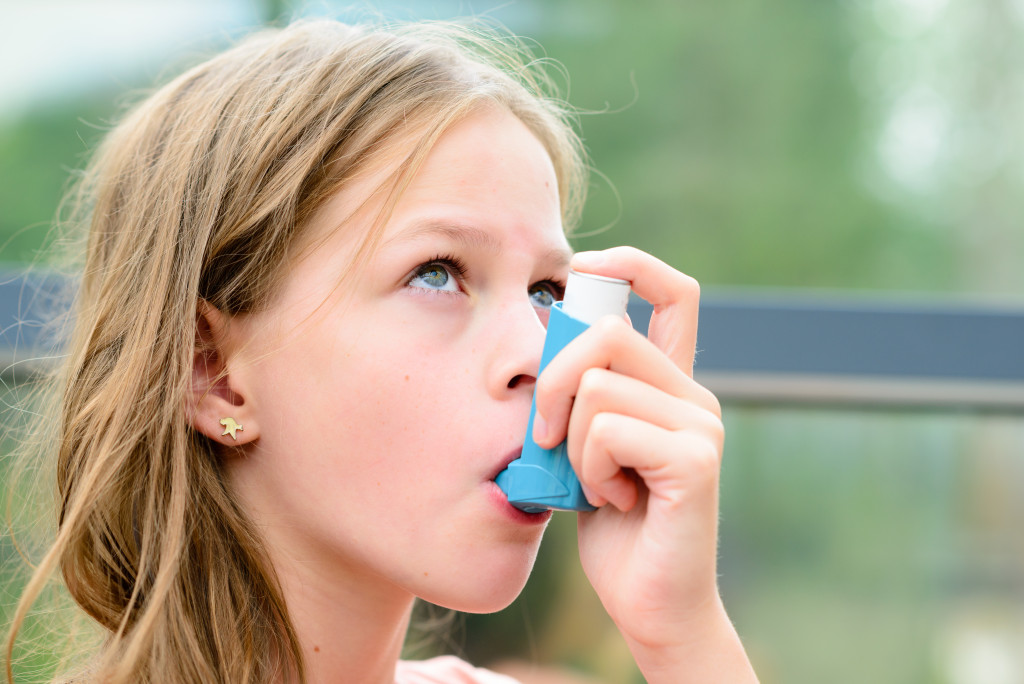According to the Asthma and Allergy Foundation of America, asthma affects over 26 million people in the United States—and that includes approximately 7 million children. If your child has asthma, you’re not alone. It’s important for you to know that there are things you can do to help your child manage their asthma and live a healthy, active life. Here are a few tips:
Make sure your child has an up-to-date asthma action plan
If your child has asthma, it’s crucial to have an updated action plan for asthma. An asthma action plan is a document that outlines what to do if your child has an asthma attack.
It should be created by you and your child’s doctor, and it should be tailored to your child’s individual needs. The plan should include what medication to use, how to recognize the signs of an attack, and what to do in the event of an attack. An updated action plan can help you feel more prepared and confident in managing your child’s asthma. If you don’t have a current plan, talk to your child’s doctor as soon as possible.
Keep track of your child’s triggers and avoid them if possible
If your child has asthma, it’s important to be aware of what can trigger an asthma attack. Common triggers include exercise, cold air, dust, pollen, and smoke. Keep track of when your child has asthma attacks and try to identify any common triggers. If possible, avoid those triggers or help your child to manage them better.
For example, if cold air is a trigger, make sure your child wears a scarf or face mask when outdoors in cold weather. If exercise is a trigger, work with your child’s doctor to develop an asthma action plan that includes strategies for dealing with exercise-induced asthma. By being aware of your child’s triggers and taking steps to avoid them, you can help to prevent asthma attacks and keep your child healthy.
Encourage your child to be active despite their condition
Even though your child has asthma, it is still essential for them to be active. Exercise can help to improve their lung function and make it easier to control their asthma symptoms.
However, it is important to take some precautions beforehand. Make sure that your child warmups for at least 10 minutes before exercising and that they have their inhaler with them in case they start to experience asthma symptoms. Also, avoid exercise when the air quality is poor, or pollen counts are high. If your child does begin to experience symptoms, have them stop and rest until the symptoms go away.
With careful planning, you can help your child lead a healthy and active life despite asthma.
Help your child manage their anxiety about their condition

If your child has asthma, you may notice that they get anxious about their condition. This is perfectly normal, and there are things that you can do to help them manage their anxiety.
First, it is important to talk to your child about their asthma. Explain what it is, how it affects their body, and what treatments are available. It can also be helpful to talk about triggers and how to avoid them. Additionally, it is important to provide emotional support for your child. Let them know you are there for them and will help them manage their condition.
With your support, your child can learn to control their asthma and live a happy and healthy life.
Keep your home clean and free of dust mites, mold, and other irritants
If your child has asthma, it’s essential to keep your home clean and free of dust mites, mold, and other irritants. One way to do this is to clean upholstered furniture regularly. Dust mites are tiny creatures that thrive in warm, humid environments. When dust mites come into contact with skin, they can cause an allergic reaction. This can trigger asthma symptoms such as coughing, wheezing, and shortness of breath.
To help reduce the number of dust mites in your home, employ the aid of an upholstery cleaning service. They can use special equipment to remove dust mites and other allergens from your furniture. Additionally, they can apply a protective treatment to your furniture that will help to prevent dust mites from returning.
By keeping your home clean and free of irritants, you can create a safer environment for your child with asthma.
Caring for a child with asthma can be daunting, but you’re not alone. With proper planning and knowledge of your child’s triggers, you can help them manage their symptoms and live a normal, active life. Follow the tips outlined above, and work with your child’s doctor to develop a comprehensive care plan.




